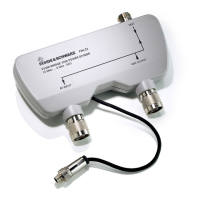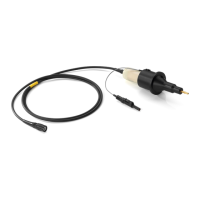TriggerMXO 4 Series
171User Manual 1335.5337.02 ─ 07
The following methods are available:
"Time"
Defines the holdoff directly as a time period. The next trigger occurs
only after the "Holdoff time" has passed.
"Events"
Defines the holdoff as a number of trigger events. The next trigger
only occurs when this number of events is reached. The number of
triggers to be skipped is defined in "Holdoff events".
"Random"
Defines the holdoff as a random time limited by "Minimum time" and
"Maximum time". For each acquisition cycle, the instrument selects a
new random holdoff time from the specified range.
Random holdoff prevents synchronization to discover effects invisible
with synchronized triggering, for example, the features of a pulse
train.
"Auto"
The holdoff time is calculated automatically based on the current hori-
zontal scale.
"Auto time scaling" defines the factor that the horizontal scale is multi-
plied with.
"Auto time" shows the resulting holdoff time: Auto time = Auto time
scaling * Horizontal scale.
"Off"
No holdoff
Remote command:
TRIGger:HOLDoff:MODE on page 566
TRIGger:HOLDoff:TIME on page 568
TRIGger:HOLDoff:EVENts on page 567
TRIGger:HOLDoff:MAX on page 567
TRIGger:HOLDoff:MIN on page 568
TRIGger:HOLDoff:AUTotime? on page 566
TRIGger:HOLDoff:SCALing on page 567
7.6 Hysteresis
Access: "Menu">"Trigger" > "Hysteresis"
Hysteresis

